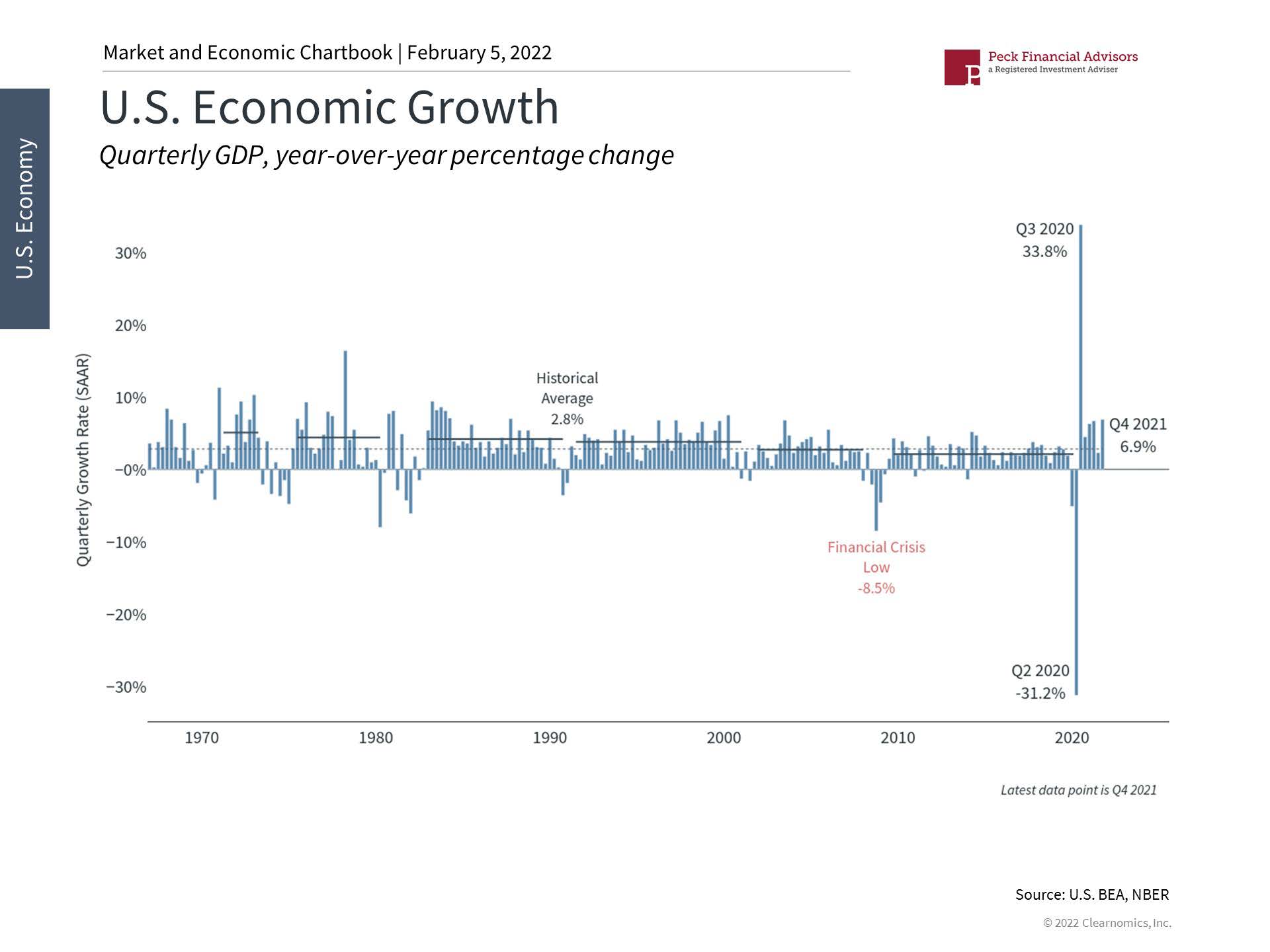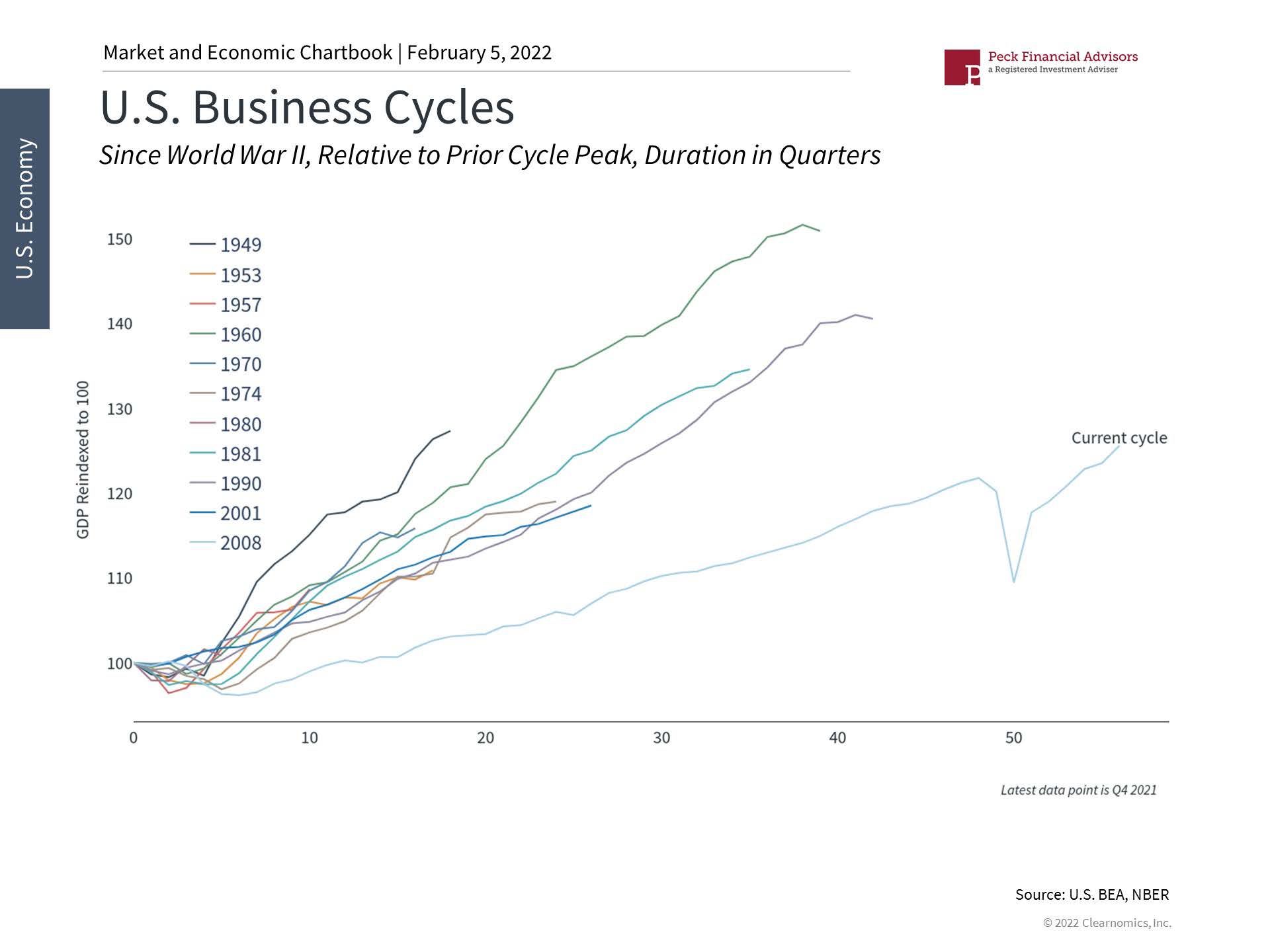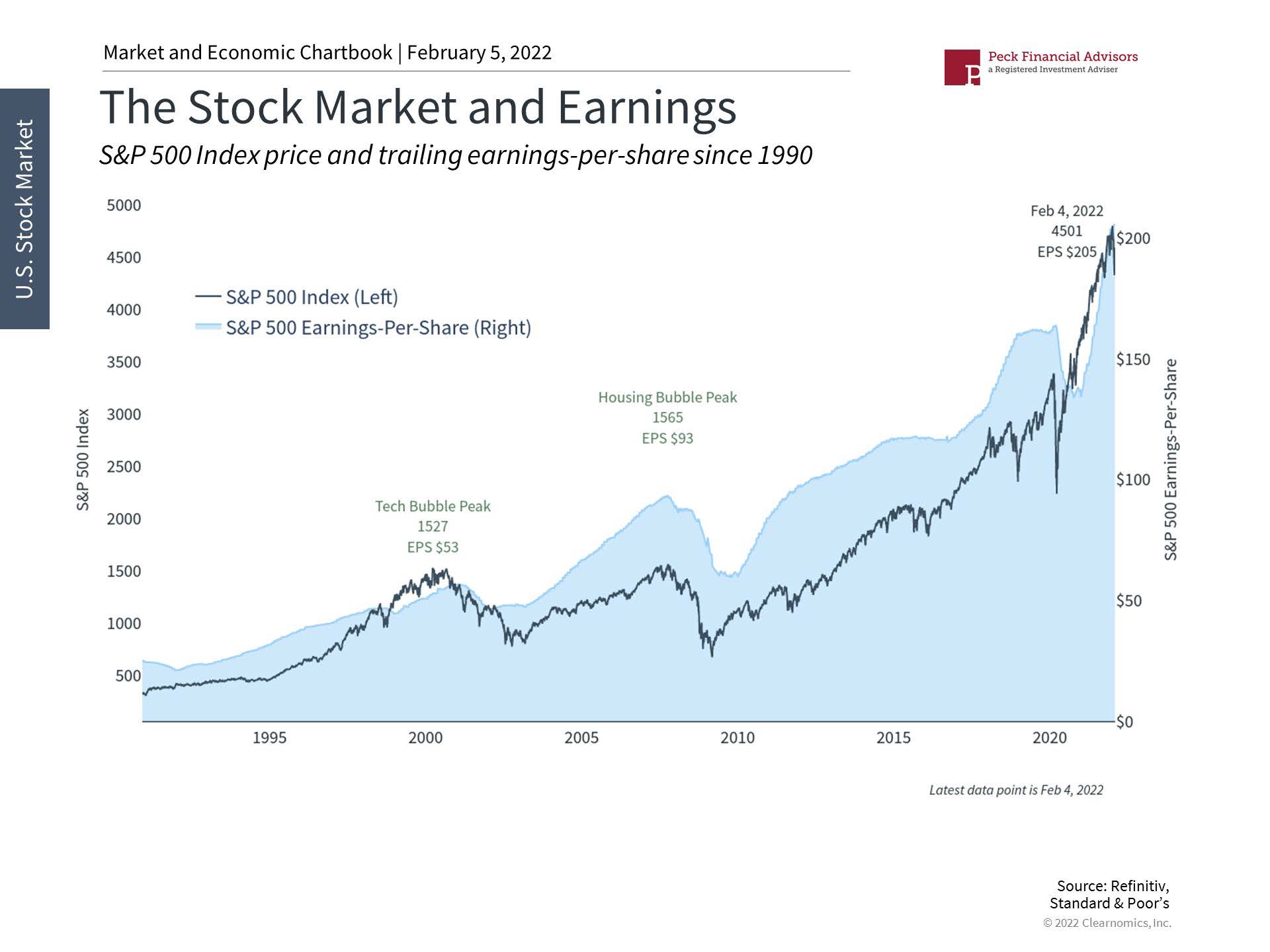What the Fastest GDP Growth in Decades Means to Investors
Author: James Liu, CFA. Founder and Head of Research, Clearnomics
The economy is growing at a healthy pace as we approach the second anniversary of the pandemic-driven recession. Despite the many challenges facing markets, from inflation to Fed rate hikes, a growing economy provides a foundation for long run market returns. After one of the worst-performing months on record, with the NASDAQ still in correction territory, how can investors stay focused on trends rather than day-to-day market swings?
While there are many ways to measure and compare economic growth, by all accounts the country's GDP is expanding at a robust pace. The latest figures for the fourth quarter of 2021 show that the economy grew 6.9% on a quarter-over-quarter basis, the fastest since the year 2000. When comparing the fourth quarter to the same quarter a year prior, the 5.5% growth rate is the fastest since 1984. In other words, the economy performed well at the end of last year despite issues around supply chains and the omicron variant.
Perhaps more importantly, the economy expanded by 5.7% throughout 2021, the most since 1984 as well. This was a significant rebound from the -3.4% contraction in 2020 which experienced the sharpest recession and recovery in history. To put this in perspective, the years after the global financial crisis saw average annual GDP growth of only 2.2%. These figures are after adjusting for inflation, so last year's GDP figure was even higher compared to the decade after 2008.
This is because not all boom-bust cycles are made equal. The root of the global financial crisis was debt, and it is harder for the economy to recover if individuals, businesses and banks are de-leveraging and afraid to expand their spending and investment activities. In contrast, the latest recession was a self-induced shutdown in response to the pandemic. Whether one agrees or disagrees with how this was managed, it's undeniable that many businesses and factories were able to reopen without losing much know-how or productive capacity. In many ways, this was like turning off and on a light rather than having a bulb burn out.
Of course, this overlooks many challenges across the economy. Not all industries have recovered fully, even as the overall economy reaches new peaks and unemployment hovers around 3.9%. Many individuals have struggled and have yet to get back on their feet. Inflation is also a significant concern, even if it could begin to stabilize in the coming months. The Fed would be in a real conundrum if a wage-price spiral ensues where inflation is baked into expectations in an uncontrolled way.
While this is not what most economists expect, it's clear that investors ought to have more tempered expectations for growth in the years ahead. The lights are back on but we shouldn't expect it to keep getting brighter at the same pace. For instance, the Fed's latest forecast for 2022 GDP growth is 4% before settling down to 2.2% each of the next two years. This is slower, yes, but this level of growth would still be one of the fastest in decades (since the year 2000).
Investors will have to adjust to these trends. However, what matters is not that the economy is perfect - it's that overall growth will support corporate earnings and thus market returns. At the moment, companies are doing extremely well across the board with an S&P 500 earnings-per-share estimate of $223 in twelve months, despite other sources of market uncertainty. Over the course of full business cycles, it is profitability that propels stocks and portfolios ahead, allowing investors to achieve their financial goals.
Below are three charts that provide perspective around today's economic growth trends.
1. The economy continues to reach new peaks

The overall economy exceeded its pre-pandemic levels in the middle of 2021. As GDP growth continues as a fast clip, the economy is reaching new peaks each quarter. In the long run, this is what matters to investors - not day-to-day headlines.
2. In 2021, the economy grew at its fastest pace in decades

The 6.9% quarter-over-quarter growth rate in Q4 is the fastest since Q2 2000, not counting the initial post-pandemic rebound in 2020. While GDP growth should be above average in 2022, investors should expect growth to return to more average levels in the coming years as the effects of the pandemic lockdowns fade.
3. Corporate profitability is strong

Ultimately, investors care about economic growth because it is what drives spending, investment and profits. Zooming out over decades, history shows us that markets do well when corporate profitability is high. This depends on business cycles and long-run trends.
The bottom line? As market volatility continues, investors should stay focused on economic trends rather than day-to-day news.

